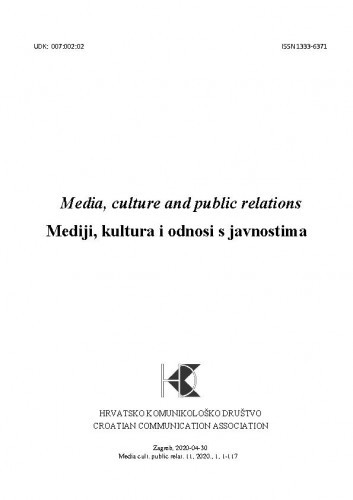Velika financijska i ekonomska kriza pravi su školski primjer ekonomske katastrofe neshvatljivih razmjera. Iako (do danas) još uvijek nema konsenzusa o uzrocima ove krize, većina stručnjaka prepoznaje krivce za krizu, ponajviše u financijskom sustavu koji se odmaknuo od kontrole i izbjegava regulaciju i nadzor. Više od deset godina nakon početka financijske krize, centralni bankari i političari tapšu po leđima: najgore je iza nas i oporavak je učinjen. Greška. Samo je pitanje vremena do izbijanja krize. I to punom snagom ... Makroekonomski indeks otpornosti (kojeg su zajedno razvili švicarski institut SRE - Swiss Re i britansko sveučilište LSE - londonska ekonomska škola) pokazuje da je globalna ekonomija danas manje otporna na globalnu financijsku krizu nego 2007. Analiza pokazuje da je 80 posto zemalja (koje pokrivaju 31 zemlju s 75% udjela u svjetskom BDP-u) sada ranjivije u tom pogledu, uprkos činjenici da su financijske institucije jače nego što su bile na početku krize. Nedavno je na blogu Svjetske banke objavljen članak čiji je autor Augusto Lopez-Claros, bivši direktor Globalnih pokazatelja i analitičar Svjetske banke. Zanimljiv je iz više razloga: posebno jer se zalaže za fiskalnu stabilizaciju u narednim godinama. Upozorio je da je danas u mnogim zemljama javni dug na razini zadnji put viđenoj na kraju Drugog svjetskog rata. Prema njegovom mišljenju, neki oblik fiskalne konsolidacije, podržan drugim strukturnim i institucionalnim reformama, možda će biti jedini održiv put u narednim godinama. U prilog ovoj tvrdnji iznosi i tri argumenta. To su sveukupno smanjeni fiskalni prostor, zatim povećani srednjoročni pritisci i, konačno, volatilnost financijskog tržišta. Kako su novinari i opće poslovno novinarstvo reagirali na početak financijske krize i što smo naučili iz nje? Je li nova financijska kriza stvarno na putu?; The great financial and economic crisis is a real school example of an economic disaster of incomprehensible proportions. Although (to this day) there is still not much consensus on the causes of this crisis, most experts recognize the culprits of the crisis, most notably in a financial system that has shied away from control and avoided regulation and supervision. More than ten years after the onset of the financial crisis, central bankers and politicians are patting their backs: the worst is behind us and the recovery is done. Error. It's only a matter of time before the crisis breaks out again. And with full force ... The Macroeconomic Resilience Index (jointly developed by the Swiss Institute of SRE - Swiss Re and the British University LSE - London School of Economics) shows that the global economy is less resilient to the global financial crisis today than it was in 2007. The analysis shows that 80 percent of countries (covering 31 countries with a 75% share of world GDP) is now more vulnerable in this respect, despite the fact that financial institutions are stronger and stronger than they were at the beginning of the crisis. The argument goes that the available shock absorbers for crisis management are weaker today than they were then. A World Bank blog recently published an article authored by Augusto Lopez-Claros, former Director of Global Indicators and Analysis at the World Bank. It is interesting for a number of reasons: especially since it is committed to fiscal stabilization in the coming years. He warned that in many countries public debt today is at levels last seen at the end of World War II. In his view, some form of fiscal consolidation, supported by other structural and institutional reforms, maybe the only viable path in the coming years. He also makes three arguments in support of this claim. These are overall reduced fiscal space, then increased medium-term pressures and, finally, financial market volatility.
Sažetak

 Media, culture and public relations : Mediji, kultura i odnosi s javnostima : 11,1(2020) / glavni i odgovorni urednik, editor-in-chief Mario Plenković.
Media, culture and public relations : Mediji, kultura i odnosi s javnostima : 11,1(2020) / glavni i odgovorni urednik, editor-in-chief Mario Plenković.